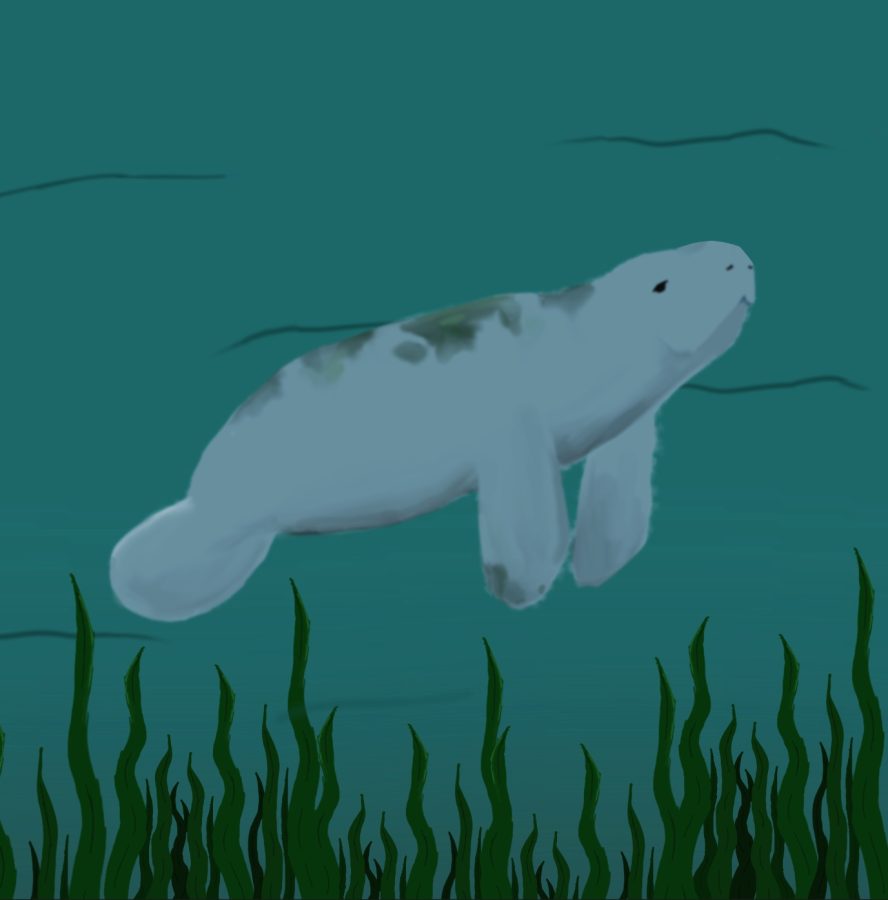Changing Tides for Manatees
Manatees are native to Southwest Florida and are a pinnacle of our native marine life.
March 23, 2023
The manatee is a commonly seen sea mammal in Florida. Yet in the 1990’s, their population numbers plummeted. In 1991, their population in the Floridian waters were at only 1,267. Yet as of the most recent collection of manatee population data, their numbers have quintupled in size. Now at at least 13,000 individuals, the manatee population has rebounded back to more stable and natural numbers. Because of this, the US Fish and Wildlife Service downgraded their status to threatened rather than endangered.
Yet the manatee population is still struggling. One of the biggest threats to manatees is red tide. This is a harmful algae bloom that affects lots of marine life. When the microscopic algae blooms, it releases toxins. These toxins make shellfish unfit for human consumption and kill sea life. At its worst, toxins from red tide may get released into the air and irritate the human respiratory system. This also applies to manatees. As they are mammals, manatees rely on respiration to survive. Just like humans, their respiratory systems can get irritated, causing difficulty breathing, illness, and occasionally death.

Another debilitating factor to manatees is runoff from local agricultural facilities. This poisons their food supply. It also causes eutrophication, which is when algae blooms in excess, limiting the oxygen supply of all the other marine organisms. This affects the entire food chain, as the algae chokes out the other natural vegetation. This includes seagrass, the manatee’s main food source.
“While there is still more work to be done to fully recover manatee populations, their numbers are climbing and the threats to the species’ survival are being reduced.” –Michael Bean at the Department of the Interior
Boat strikes are still a direct threat to manatees. Manatees aren’t predators; they aren’t very skilled swimmers. They tend to bumble their way through the water rather than dart around. They are also rather curious, meaning they will approach the sound of a running boat motor. This results in prop strikes. Boat props will cut manatees, resulting in them dying from either bleeding out or infection.

Yet there is still hope for manatees. Conservation efforts that limit runoff and boat strikes aid in elevating manatee’s numbers. With time and effort, manatee numbers will continue to climb. While they may never get back to how they were before human intervention, they will still continue to climb.








